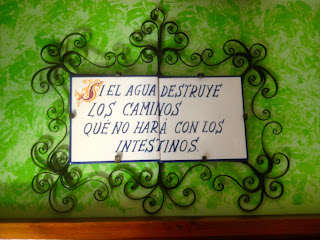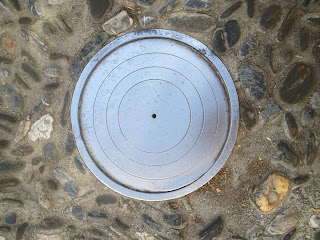The now stolen KTM during a mountain ride in Corsica, last August
This summer, on the way back from a week-long bike tour that included southern Corsica (which was great by the way), we awoke early in our hotel in Toulon, having gotten off the ferry around midnight, to find that my KTM Duke was no longer attached to its pole in the bike park outside our hotel. Travelers be warned : Toulon (and probably Marseille as well) are definitely not safe places for bikes and the thieves seem to be well equipped. After doing the rounds of theft declaration at the local police station, the assistance company did their job and found us a rental car to take us and our stuff home. Then started a series of boring formalities and a 21 day wait for the insurance company to reimburse me so that I could buy another everyday ride.
What was I going to get? What would be the ideal bike for the money I had available? I put some of the time to use by reading up all sorts of magazines and tests related on the web, trawling the web for recent second-hand versions of the machines that I thought might best fit my job description, and trundled around a few dealers to look, drool and discuss things. The brief was basically this: a bike that was fun to ride, handling well, with an engine having plenty of punch and character well integrated to an ensemble that was capable of occasionally also taking two people and some luggage on longish trips in almost acceptable comfort. No, we don't need armchairs yet!
The new Norton Commando, taken alongside my now long-lost KTM during a previous trip. Looks good but is just 50% too expensive when compared with machines that do a similar job. And I have an old one anyway.
A big sports/trail bike? They are certainly now sophisticated, fast and comfortable, but they are also ugly, mostly too heavy, expensive and their bulkiness just puts me off. I drooled a bit over the new Norton but it is fiendishly expensive and I am not convinced about its luggage capacity. I was tempted by the BMW 1200 R, a sensible choice and by all accounts a very good machine, but a bit pricey, especially with the necessary accessories, and even for a second-hand one. Another KTM? Yes, very possibly but not the 690 Duke again, which, although a lot of fun to ride solo, has an annoying lack of flexibility below 3500 rpm, vibrates quite a lot and can sound a bit tinny. Its carrying capacity is also limited and anyway I wanted to try something else. The twin KTMs, especially the 990, seemed like good options and KTM are one of the few manufacturers who deliver a decent tool kit. Not a sufficient reason I know, but it is worth mentioning. I was also very tempted by a Moto Guzzi 1200 sport, which can do bags easily and has character. I got as far as finding a couple of recent second handers at the right price but the weight of the thing made me hesitate a bit. I do adhere to Colin Chapman's adage of "add lightness". I looked at Triumphs Speed and Street Triples, which clearly fit the fun part of my brief but the luggage problem was not going to be solved there.
When I sold my Ducati Multistrada (the old model) in 2012, after a long series of mechanical problems, I had sworn not to return to Ducati in a hurry. Yet the Italian firm have recently brought out a version of the Hypermotard equipped with side panniers, a screen and a few other mods to make the thing a but more civilized for ageing bikers. And I read here an excellent series of filmed long-term test reviews of this machine in the web version of Motor Cycle News by someone who clearly has similar requirements to myself. This bike, which uses the 821 water-cooled Testastratta engine, seemed to fit the bill and, although I rather dislike the looks of it (that horrible duck bill!), I decided to have a try on one. I found a recent demo model at the Paris dealers that was just about in my price range and went for a test ride. Although the weather was wet and I couldn't quite figure out how to use the computer that allows you to programme engine performance, throttle response, brake locking and wheel spin (can you believe these modern machines and their electronics?) the engine felt really nice, surprisingly flexible and with plenty of grunt. And the thing felt light and handled like a Ducati should but with some added comfort. In a sense, it reminded me of the spirit of the old version of the Multistrada, with the advantages of a more modern mechanical set-up and, hopefully, greater reliability (Audi, the new owners, must surely be keeping an eye on this aspect at least). So, after some modest haggling, I bought the thing, then and there. It only had 1600 kilometers on the clock and had been properly run-in.
here she is...my Ducati Hyperstrada (what an awful name!) in the vineyards of Clos de Vougeot in Burgundy
I took final delivery last week and rode it down from Paris to Burgundy and back on an often wet 700 kilometer spin last weekend. It's clearly a very good bike and seems surprisingly versatile. The engine programme can be set to urban (which reduces power from 105 to 75 bhp), touring (full power but less rapid throttle response), or sport. And within these basic settings one can play with the degrees of ABS intervention and track control. I have yet to get the full measure of all of this technology but it seems convincing in its effects and the traction control seems useful in the rain.
The engine is the star element for me on this machine. It is far smoother and more flexible than the KTM 690 (to be expected, moving from a single to a twin, but it is also quite a bit more flexible than was my old Multistrada), and it has terrific mid-range grunt and a pleasantly gruff bark when accelerating. It will easily lift the front wheel in almost any gear if you allow it. I have yet to test it at the top end since I am finishing off the running-in. The handling seems fine, neutral and steady and it also feels light and stable at low speeds. Useful in city traffic. Brakes are good too. The riding position is pretty comfortable on a long trip, although the dent in the seat, while holding you well, prevents you from shifting your butt back for time to time. The screen protects you a bit from the breeze and the rain, but a taller one could be an option. The control buttons take a bit of getting used to and will not be too easy to manage with winter gloves on.
Ah, those digital display systems. Not crazy about them
The centre stand will probably limit cornering, especially when two up, but this bike is a handler alright
So yes, I am, so far, a happy new owner of this just second-hand Ducati that seems to be a very good compromise between the somewhat disparate criteriae that I had on my list. These are of course early days, but we are off to a good start together.



























